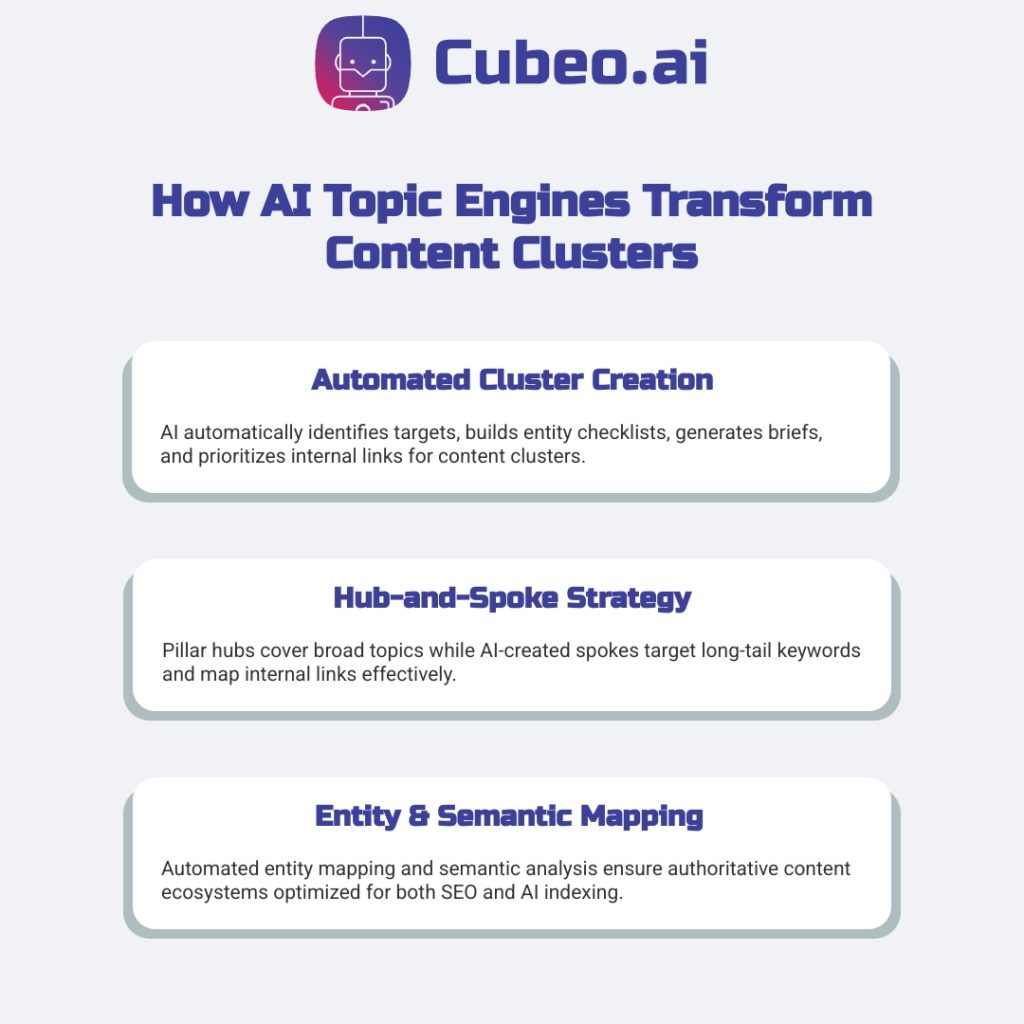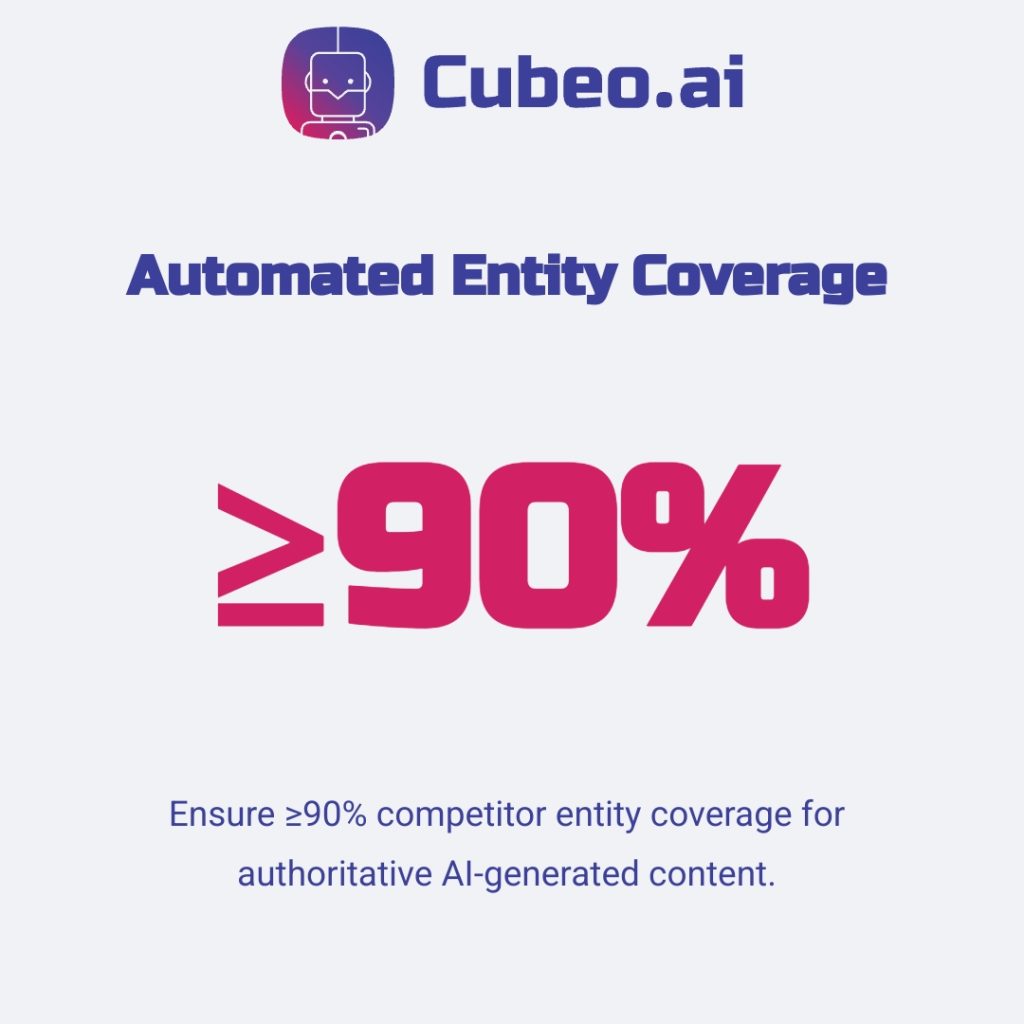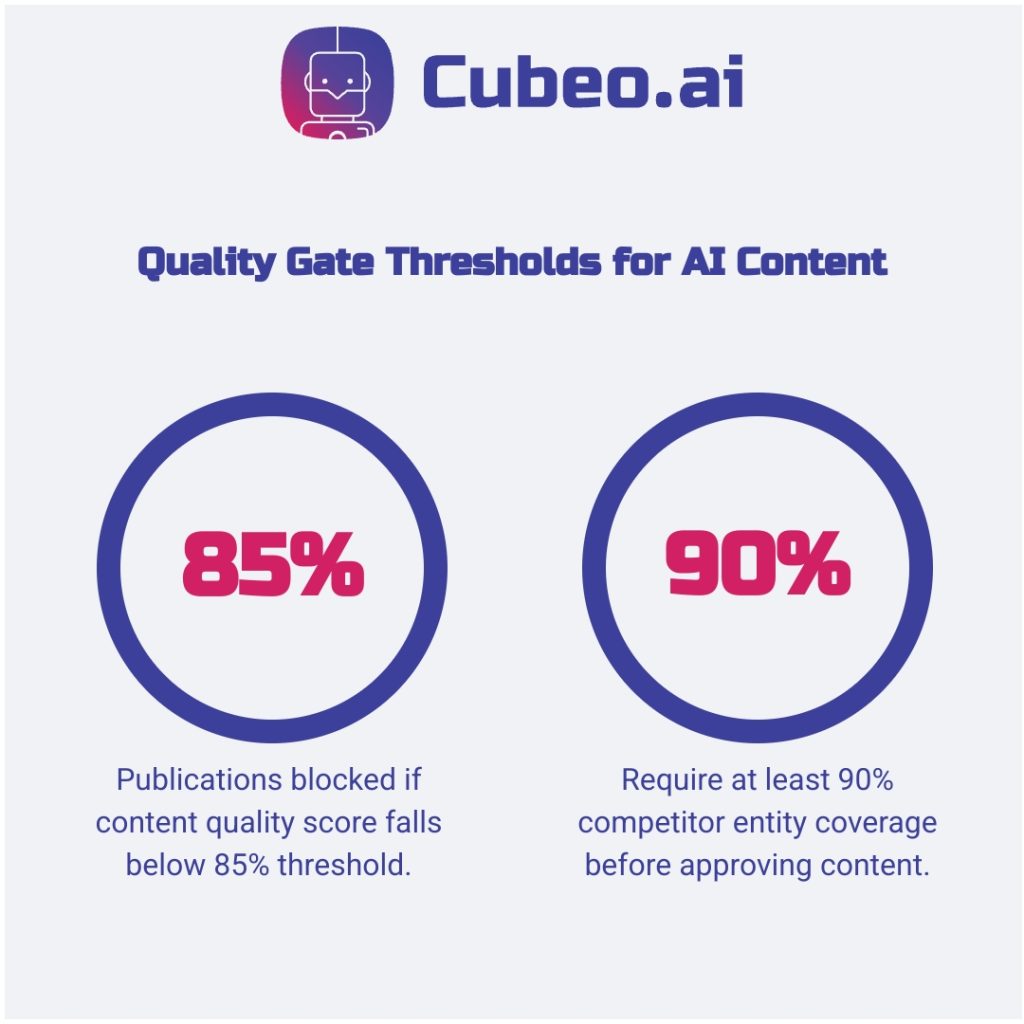Content clusters promise SEO gains, but manual creation kills scale. Teams spend weeks on a single cluster and rarely hit needed volume.
An AI topic engine converts that work into a no-code content pipeline. Think factory line: specialized agents automate research, briefs, drafts, linking, and refreshes so you produce more high-quality pillars faster.
Instead of hunting Search Engine Results Pages (SERPs) for hours, a researcher agent captures SERP signals and an entity map (key concepts and names to cover) in minutes. Brief and writer agents then create LEO-optimized drafts. LEO (Large Language Model Optimization) means content structured so AI tools like ChatGPT can quote and cite it.
Teams using automated content pipelines report cutting blog creation from four hours to 45 minutes.
Why Topic Engines Change How You Build Content Clusters
Traditional content clusters take weeks of manual research and content mapping. A topic engine flips that approach by using AI systems to automatically identify targets, build entity checklists (the people, concepts, and brands you must mention to be authoritative), generate content briefs, and prioritize internal links.
Your engine operates like a content production line. While traditional clusters depend on human strategists to spot gaps and plan linking, AI engines analyze search patterns and semantic relationships (how topics connect conceptually) in real-time. They identify which pillar topics need supporting content and generate briefs targeting specific user intents.
The results prove the approach works. Pillar pages and topic clusters improve search rankings long-term, with evergreen content generating 38% of all website traffic. Topic engines automate the creation of these high-performing content ecosystems while ensuring LEO optimization so AI models can properly index and reference your content.
The Hub-and-Spoke Architecture That Actually Works
Your pillar content serves as the authoritative hub covering broad topics comprehensively. Supporting articles branch out like spokes, targeting long-tail keywords and specific user questions.
AI engines automatically identify content gaps by analyzing competitor coverage and unanswered questions. They generate internal linking maps that create topical authority and distribute page rank effectively throughout your cluster.
The hub-and-spoke content architecture works because search engines reward websites demonstrating expertise across related topics rather than isolated pieces. Your engine ensures each supporting article strengthens pillar authority while capturing traffic from specific search intents.
Output: prioritized content queue, internal link map, entity checklist per article. Businesses implementing topic clusters see measurable improvements in organic traffic within 3-6 months.
Entity Mapping and Semantic Relationships
AI engines identify related entities (people, places, concepts) and semantic connections that humans often miss. Entity mapping means creating lists of authoritative terms, names, and concepts you must include to demonstrate topical expertise.
Your engine performs automated competitor analysis by examining search results, identifying which entities competitors cover, and spotting gaps in your current strategy. This replaces hours of manual SERP research with automated entity checklists.
Semantic relationships in content strategy determine how well search engines understand your expertise. Topic engines ensure proper entity coverage while optimizing for LEO so AI models can understand and index your content structure.
Result: comprehensive content ecosystems that satisfy both traditional SEO requirements and modern AI model indexing needs.

Building Your AI Agent Pipeline
Most content teams juggle 5 different tools to research, plan, write, and optimize a single blog post. Your AI agent pipeline consolidates this into one automated workflow where specialized agents handle each stage and pass work seamlessly to the next.
An AI pipeline orchestration system automates data-to-action processes through five layers: frontend, orchestration, intelligence, data backbone, and output. For content creation, your Researcher Agent pulls SERP data, extracts entities, and generates briefs that automatically trigger your Writer Agent.
Researcher Agent Setup and Configuration
Configure your Researcher Agent to analyze search results for target keywords and extract competitor content strategies automatically. Set SERP analysis parameters: top 10 results, expected runtime 2-5 minutes per query on no-code platforms, run per pillar on publish or weekly for priority pillars.
Your agent generates entity extraction workflows that identify people, places, concepts, and brands you must mention to demonstrate topical authority. Define content gap triggers that activate when competitors cover topics you haven’t addressed.
Establish automated research report generation that outputs prioritized keyword lists, entity checklists, and competitor content summaries. Target entity coverage: ≥90% of competitor entities for topical authority.
Output: SERP analysis report, entity map, content gap assessment, competitor strategy summary.
Content Strategist and Writer Agent Coordination
Design content brief templates that include SEO requirements (target keywords, internal links) and LEO specifications (entity coverage, question-answer blocks for AI model indexing). Your Content Strategist Agent uses research inputs to generate comprehensive briefs automatically.
Set up brand voice guidelines and tone consistency checks that your Writer Agent applies during content generation. The role of AI in a marketing team shows how automated brand voice optimization maintains consistency across content at scale.
Configure automated content optimization workflows that ensure proper heading structure, meta descriptions, and internal linking patterns. Implement quality gates that verify entity coverage, keyword density and brand voice alignment before content moves to publication.
Output: SEO/LEO-optimized brief, brand voice checklist, automated quality review, publication-ready draft.

KPIs and Governance That Prove Cluster Performance
You built a topic engine — now prove it works. 40% of marketers struggle to measure content effectiveness, and without clear KPIs, your AI investment becomes another “black box” that executives question.
Focus on 3 layers: core KPIs that track search visibility and topical authority gains, governance systems that maintain quality at scale, and automated dashboards that surface issues before they impact results. 82% of marketers cite maintaining content quality as their biggest challenge with AI tools.
Essential Metrics for Topic Engine Success
Track these 4 core KPIs with specific dashboard tiles and action thresholds:
Search visibility: Monitor ranking positions, featured snippet captures, and PAA coverage across target keyword clusters. Dashboard tile: keyword improvement rate. Suggested benchmark: >60% of priority keywords show movement within 90 days.
Content velocity: Measure time-to-publish and production volume. Leading teams report velocity improvements of 25-35% with AI workflows. Dashboard tile: average days from brief to publish.
Topical authority scores: Track domain expertise signals like entity coverage (mentions of key people, concepts, brands), internal link depth, and citation patterns. Dashboard tile: entity coverage percentage per cluster.
LEO citations: Count times cluster pages are referenced by LLM-backed sources like Perplexity or AI answer citations. Dashboard tile: LEO citation count per pillar. Suggested target: 1-3 citations per pillar within 90 days.
Governance and Quality Control Systems
Implement automated quality gates and human oversight workflows:
Automated quality gates: Entity coverage ≥90%, source citations present, brand voice alignment verified. Block publication if checks fail. Set quality score threshold at 85% (suggested baseline).
Human review workflows: Escalate high-risk or high-traffic content to editors within 24 hours. 72% of teams plan to increase AI investment, but only 29% have governance strategies for AI-generated content.
Feedback loops: Failed quality checks create tickets to retrain QA Agent and update brief templates. Track governance metrics: review turnaround time, escalation rate, and quality gate pass/fail ratios.
Compliance monitoring: Automated fact-checking flags unsupported claims. Source verification workflows ensure citations link to authoritative sources.
Dashboard Setup and Performance Monitoring
Configure essential dashboard tiles and alert systems:
Required tiles: Cluster coverage percentage, average link depth to pillars, PAA capture count, LEO citations, time-to-publish metrics, and quality gate pass rates.
Automated alerts: Quality score drops below 85% (suggested) or ranking decreases exceed 20% for priority keywords trigger immediate notifications.
Reporting cadence: Weekly KPI trends and monthly governance reviews. Dashboard surfaces actionable insights: which clusters need refresh, which keywords require support content, and which quality gates trigger most frequently.

FAQ
How long does it take to set up an AI topic engine for a small marketing team?
Setting up an AI topic engine for a small marketing team typically takes between 3 to 9 months, a timeline influenced by the project’s scope, the quality of your existing data, and the team’s experience with AI tools. This duration encompasses crucial steps like data preparation, model training, and seamless integration into your current systems.
The speed of deployment can be significantly accelerated with clean, well-labeled data, which is foundational for any robust AI system. Our focus is on democratizing AI, ensuring that even complex setups are streamlined so teams can rapidly test and validate their content ideas, transforming months of work into days. This approach empowers marketing professionals to harness AI’s potential without extensive coding barriers, focusing on delivering secure, reliable solutions that work in almost every environment.
What's the difference between topic engines and traditional content planning tools?
The fundamental difference lies in their approach: topic engines prioritize modular content reuse and intelligent content generation, while traditional content planning tools typically focus on linear, one-off content creation. Topic engines leverage AI to understand context, reason, and adapt, enabling the creation of truly autonomous workflows that can produce consistent, high-quality content across various formats and channels.
Traditional tools, while useful for smaller projects, often require more manual effort to adapt content for different outputs, limiting scalability and efficiency. Our vision is to move beyond simple automation to transformative automation, where AI empowers teams to scale content production, maintain brand consistency, and focus on strategic fine-tuning, fundamentally changing what your business can accomplish.
How do you maintain content quality when automating cluster creation at scale?
Maintaining content quality when automating cluster creation at scale is achieved through a combination of precise keyword targeting, strategic internal linking, and leveraging AI for data-driven insights. It’s crucial to ensure each cluster page targets distinct aspects of your main topic with unique primary keywords, avoiding content cannibalization where pages compete for the same search intent.
We emphasize avoiding “loop-soup” – excessive, indiscriminate internal linking – to maintain clarity for both users and search engines, always prioritizing user experience. Our approach focuses on production-ready solutions, ensuring that automated content is not just voluminous but also valuable, accurate and effective, allowing teams to build more without increasing headcount and rapidly validate ideas.



